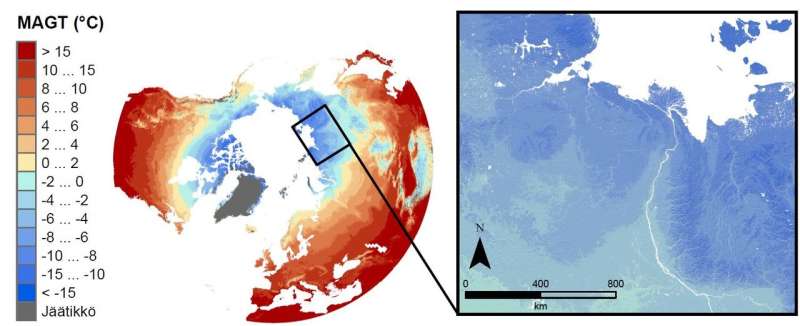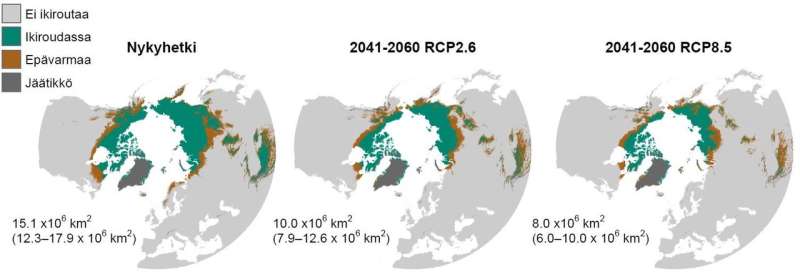More detailed data on thermal conditions of Arctic ground

Understanding the thermal conditions of the ground in the Arctic is of utmost importance in order to assess the effects of climate change on the occurrence of permafrost, on the ecosystems and societies of Arctis, and the global climate system. Juha Aalto and Miska Luoto, researchers in natural geography at the University of Helsinki, participated in this study. The findings of the study have been published in the international journal Geophysical Research Letters.
The research has been carried out by Juha Aalto and Miska Luoto (Department of Geosciences and Geography, University of Helsinki / Finnish Meteorological Institute), and Olli Karjalainen and Jan Hjort (Geography Research Unit, University of Oulu).
Support from statistical methods
The research modeled the temperatures of the ground and the thickness of the active layer, i.e. the layer above the permafrost, which thaws in summer. The study covered most of the northern hemisphere.
The modeling was based on a database combining extensive field measurements and digital environmental data. The study utilised statistical ensemble methods with a spatial resolution of one square kilometer, the highest accuracy ever achieved.
"This is a significant step forward, as previous studies have only been able to provide a very general overview of the thermal conditions of Arctic ground and their changes," says postdoctoral researcher Juha Aalto.
Great changes in permafrost occurrence expected
According to the research findings, an area of around 15 million square kilometres contains favourable conditions for permafrost at the moment, taking modeling uncertainty into consideration.

"However, this area will shrink a great deal in future as a result of climate change," Aalto says.
Based on the best-case scenario for climate change (RCP2. 6), for example, conditions favourable to permafrost in the northern hemisphere will reduce with over one third by year 2050 as temperature and rain conditions change.
According to the worst-case scenario (RCP8. 5), areas favourable to permafrost would already have reduced by 47 percent at that point.
It is also remarkable that our models show that the relatively greatest changes will happen in areas where current soil temperatures are low, but the predicted climate change extensive. Such areas are e.g. the large permafrost areas in mid-Siberia," says Juha Aalto.
"The new data produced through the research will give us new opportunities to assess e.g. carbon cycle processes and the risks to the infrastructure posed by the permafrost melting," says Miska Luoto, professor in natural geography. The research is still on-going and more exact estimates of how the melting frost will affect such things as buildings and roads will be prepared.
The research is a collaboration between the University of Helsinki, the Finnish Meteorological Institute, and the University of Oulu, and is a part of the INFRAHAZARD project funded by the Academy of Finland. The project studies Arctic ground surface processes under climate change, and assesses the risks it poses to human activities.
More information: J. Aalto et al, Statistical Forecasting of Current and Future Circum-Arctic Ground Temperatures and Active Layer Thickness, Geophysical Research Letters (2018). DOI: 10.1029/2018GL078007
Journal information: Geophysical Research Letters
Provided by University of Helsinki




















